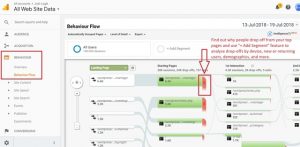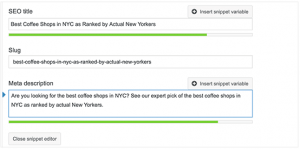
geralt / Pixabay
The world of enterprise is moving ever so fast. According to the report Performance Management’s Digital Shift by McKinsey & Company and MIT Sloan Management Review, steering your company to success nowadays takes less gut feeling and a more data-based approach.
Naturally, such an environment fosters an ever-growing need for professional performance management. Both industries’ leaders and employees now tend to recognize the major importance of relevant, informed performance management.
The snag is the more men, the more minds. With such liberty of opinions, it can get difficult to sort the wheat from the chaff – that is, to figure out what performance management approach is best, at least in one’s particular case. No wonder, considering that even the leading specialists in this area may at times have wildly varying opinions on the matter.
One such matter is Goal-oriented VS Process-oriented performance management. Both are intended to bring businesses to the peak of success, but how to pick one that best suits you? Today, I’d like to help you figure out what’s what in this intricate and important topic. We’ll also discuss the future of performance management, along with misconceptions regarding some of its’ techniques. Take it away!
Goal-oriented VS Process-oriented management
First of all, let’s go over the basics, shall we?
Goal-oriented performance management
When goal-oriented leaders make business decisions or evaluate work results of a person or team, they do this with the overarching target in mind. Without one, it’s downright impossible to grow a business or make any kind of projections, and little to no reasons to even start a business in the first place.
“After all, how do you plan your next move without knowing what game you’re playing?”
You can’t win in a game without a clear objective. So defining a clear goal of the project you take part in from the get-go should always be your top priority.
Obviously, becoming goal-oriented takes more than just switching a mindset. One needs to know what they’re doing:
- Based on the data, select an approach that suits their particular organization and business area
- Develop an action plan that at all stages keeps the overarching Goal as the main priority
- Employ a set of Key Indicators that will show whether the organization’s actions are actually moving it towards the Goal
- Utilize a digital tool that facilitates goal-oriented performance management
Process-oriented performance management
As opposed to goal-oriented managers, process-oriented people focus on how, not where they’re striving to get. You could say that for them, it’s more about the journey than the destination. They believe that thoroughly considered and meticulously built business processes will deliver success themselves; that even if they don’t meet their goals all the time, they will grow and develop along the way.
The process-oriented approach works great… once you have time-tested processes to case-harden. The main way to perfect business processes has long been through repetition and amassing statistical data. The problem is, we’re living in the VUCA world now. To survive in such an environment, organizations must be ready to change their objectives and do it frequently. You may not have enough time, let alone money and resources, to rinse and repeat, to document and keep track of all your processes.
Goal-oriented or Process-oriented?
So, which approach is better? This might sound contradictory, but – none. Not on its own, at least. After all, to reach your goals, you need to take the correct business actions, and to build proper business processes you need to know what targets you’re aiming for. A manager worth their money will always strive to make the best of two worlds: set the right goals AND install the right processes to meet them.
Now, that doesn’t mean you will always be able to employ both approaches in parallel. At times, and in certain situations, you will have to choose which of them to favor. Do you drop well-oiled business processes and risk with something new to still deliver the goal? Or do you select a different goal to be able to maintain the processes that your organization is good at?
The answer is – without a goal, there is no process. A process is but a tool, and should always take a back seat to a goal. Only after you’ve done due research and set accurate, data-driven goals, should you go through your toolkit and see what means you have to reach those.
How to employ Goal-oriented performance management
We live in the times when business decisions can no longer be based upon managerial intuitions and impressions. To implement performance management that’s both Goal-oriented AND relevant, a number of steps are necessary, as illustrated by the McKinsey & Company’s study.
- Have more manager-led conversations, as opposed to traditional annual or semiannual reviews (that are a common source of frustration for both employees and managers)
- Foster a team-oriented, data-driven performance management culture. This includes developing or using off-the-shelf platforms that assess and show human resource interdependencies in teams.
- Build a feedback loop. Continuous feedback on employees’ development and growth opportunities.
- Ensure clarity between assessing performance and developing skills.
- Focus on transparency. Employees and managers should have access to feedback data to hold performance management trustworthy and credible.
- Align performance management and Key Results.
The future of performance management
It becomes ever so clear that old-school performance management approaches are exactly that, old. Major corporations all over the world acknowledge this issue and are looking for ways to tackle it. Examples are dramatic:
- Google has built a compensation system where high performers are paid by times more than the average employees
- Microsoft and General Electric are dumping their annual “stack and rank” systems in favor of coaching and continual feedback loop
- Atlassian is automating as many evaluation activities as possible instead of performing them manually
- Netflix is setting objectives that are expected to change rapidly, be fluid, and is thus no longer evaluating employees against annual goals.
Even though the perfect template of performance management of the future is yet to emerge, the patterns are already here. Evaluations based on under- and over-performing employees, instead of the average. Systems that facilitate data-driven, real-time analysis. Frequent, as-needed development discussions and fact-based performance.
Side note on the OKR hype
In passing, I’d like to address the recent public interest around the OKR (Objectives and Key Results) approach to performance management. Though not a new concept, it’s been the talk of the town recently, some regarding it the next big thing in the industry. Let’s gloss over it, compare OKR with other performance management approaches, and see if it’s worth the hype.
The origins of all performance management techniques derive from MBO (a.k.a. Management by Objectives). In this approach first popularized back in 1954, the process includes setting concrete objectives within a business that management can convey to team members, then figuring out how to achieve each said objective in sequence.
It turned out, MBO has a number of problems, which caused the arrival of all the different techniques. The first problem is its dependence on the right KPIs. You can easily screw up by picking the wrong ones and thus moving in the direction that’s in no way beneficiary to your organization. And then, even if the KPIs are chosen masterfully – business is not all about them certain aspects of companies’ success and failure do not derive from KPIs directly, are difficult to decompose by them.
All the following performance management approaches are trying to address these issues:
Comparison: OKR vs MBO vs KPI vs BSC vs North Star Metrics
| Approach | The essence of the approach | Focuses on |
| OKR (Objective and Key Results) | – Set an Objective – a clearly defined goal
– Determine one or more Key Results – specific measures that will track the achievement of the Objective |
Meeting overarching Goals / Objectives/ Targets |
| MBO (Management by Objectives) | – Define specific objectives within an organization
– Decide how to achieve each objective in sequence |
Meeting overarching Goals / Objectives/ Targets |
| KPI (Key Performance Indicators) | – Evaluate teams’ and individuals’ performance based on the set of predetermined (and relevant) indicators | Meeting overarching Goals / Objectives/ Targets |
| BSC (Balanced Scorecard) | – Engage in a business strategy
– Measure the performance – Compare it to a reference value – Make corrective interventions as required |
Meeting overarching Goals / Objectives/ Targets |
| North Star Metrics | – Focus all efforts on a single metric that best captures the core value of your product | Meeting overarching Goals / Objectives/ Targets |
As you may have noticed, all these approaches have a striking resemblance in terms of their focus. They all serve the same role – helping organizations meet their end-goals. The only difference is in the details, how and where they’re best applied.
So OKR is just one of the many goal-oriented performance management techniques. There’s no inherent secret ingredient in it, rather one should focus on setting proper, relevant, measurable, and representative KPIs. It’s all about applying the right tool to the right problem. And speaking of goal-oriented, data-driven tools…
Digital tools for performance management
As you can imagine, digital solutions for performance management are aplenty. Some focus on specific aspects or tasks, while others aim to deliver all-in-one service. Reviewing these tools would make for another article, so I’d rather tell you about one that, I believe, outperforms its counterparts in certain areas. I’m talking about Goals by KeepSolid. It is a web-based planning and management app with a number of appealing features.
First of all, it fosters an effective goal-setting:
- It involves employees in the process, thus securing their buy-in
- It links individual tasks to business objectives, allowing employees to see how their work fits into the big picture
- It allows to adapt and shift goals in real-time, facilitating evolution and preventing stagnation of objectives
Second, the name checks in, as Goals is a goal-oriented platform, through and through. You establish an overarching goal, or Target, from the get-go. Everything you do within the app after that, from building a project mind map to managing teams and analyzing performance, revolves around the Target.
Lastly, the app is designed to provide you all the vital information you need to execute data-driven performance management. In Goals, you will find reports on all aspects of your business – from team workload to burnup charts. All in all, it is a handy solution for any leader who’s interested in introducing data-based, relevant performance management in their organization.
Business & Finance Articles on Business 2 Community
(69)







